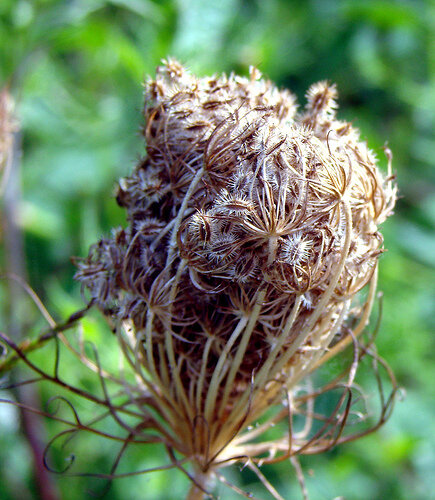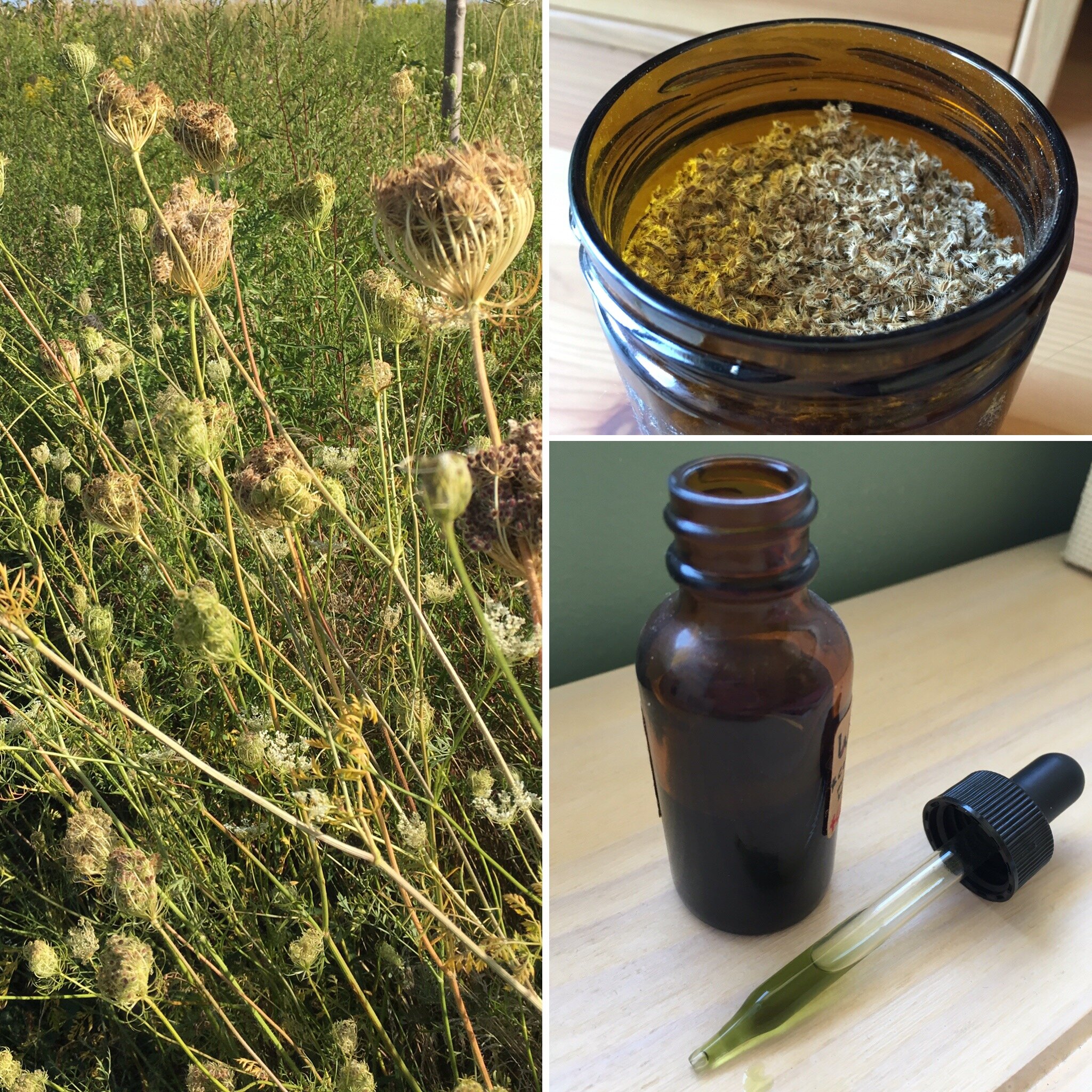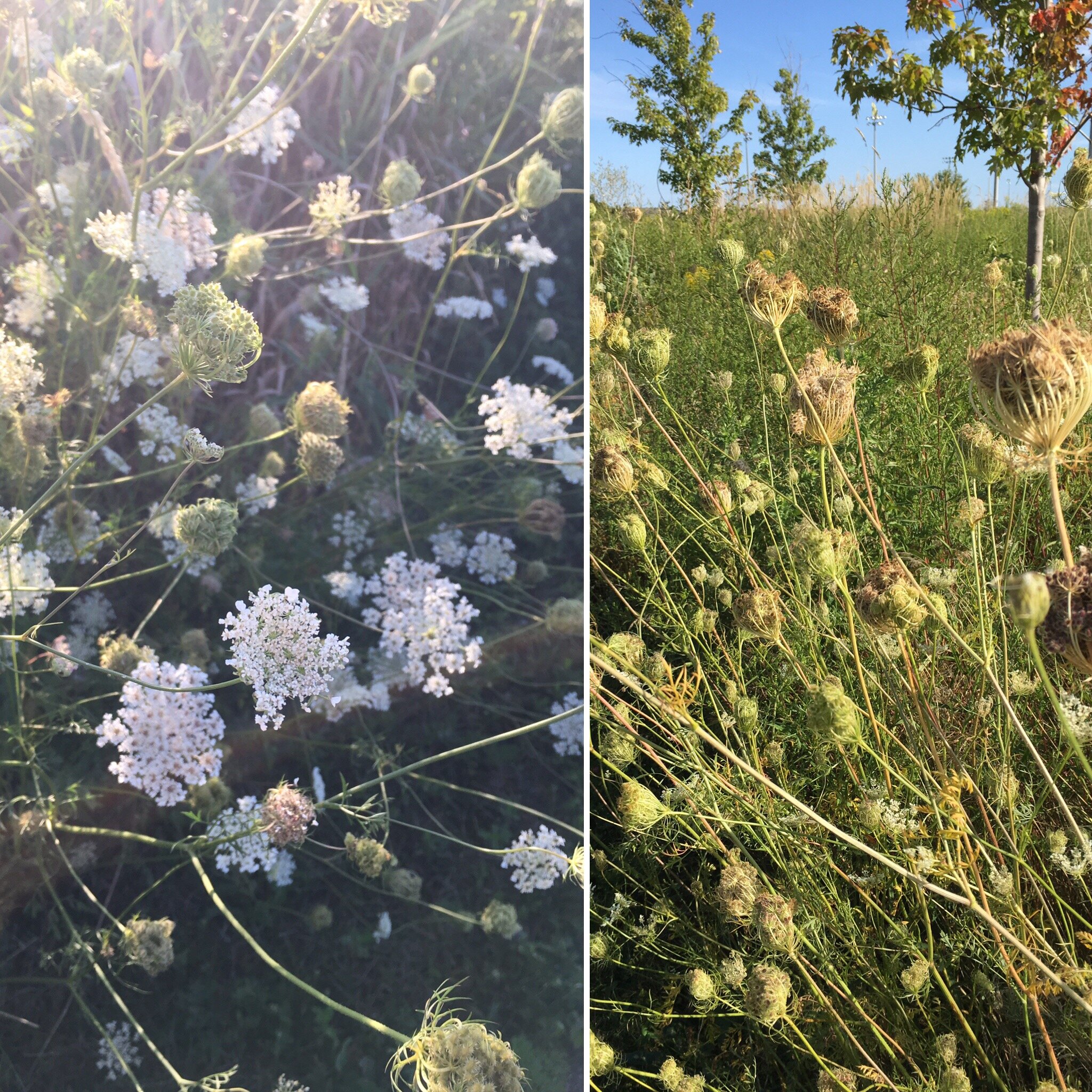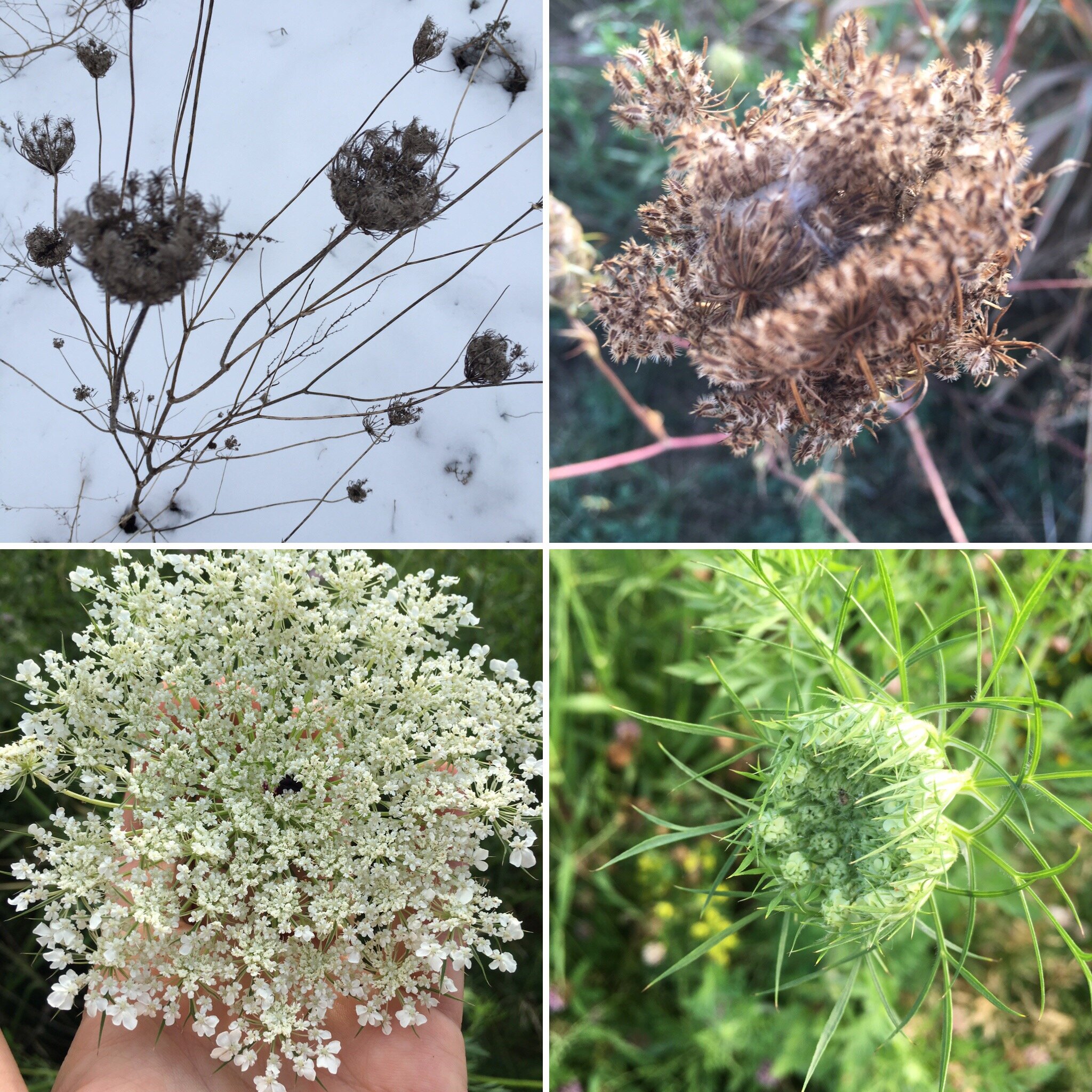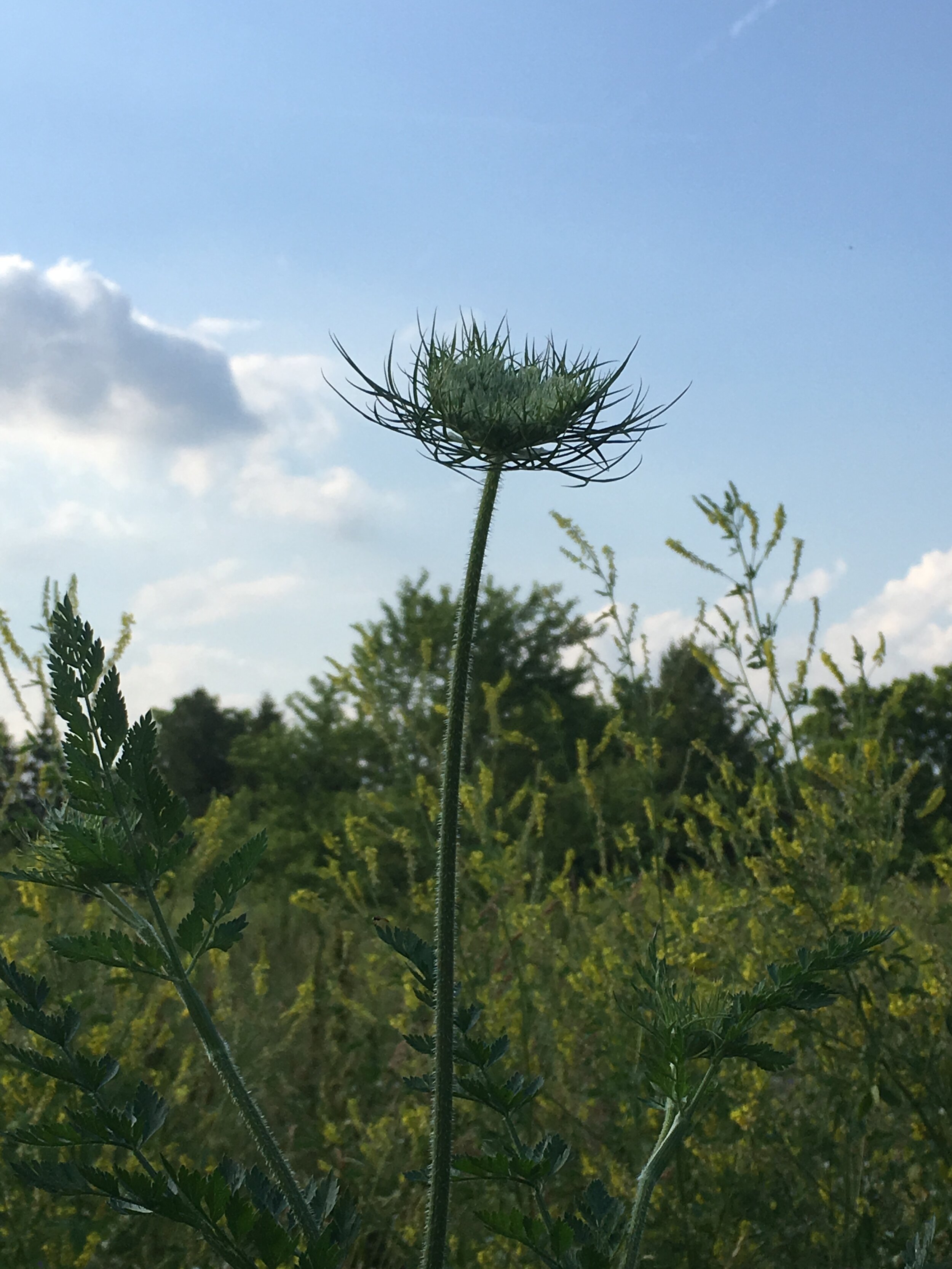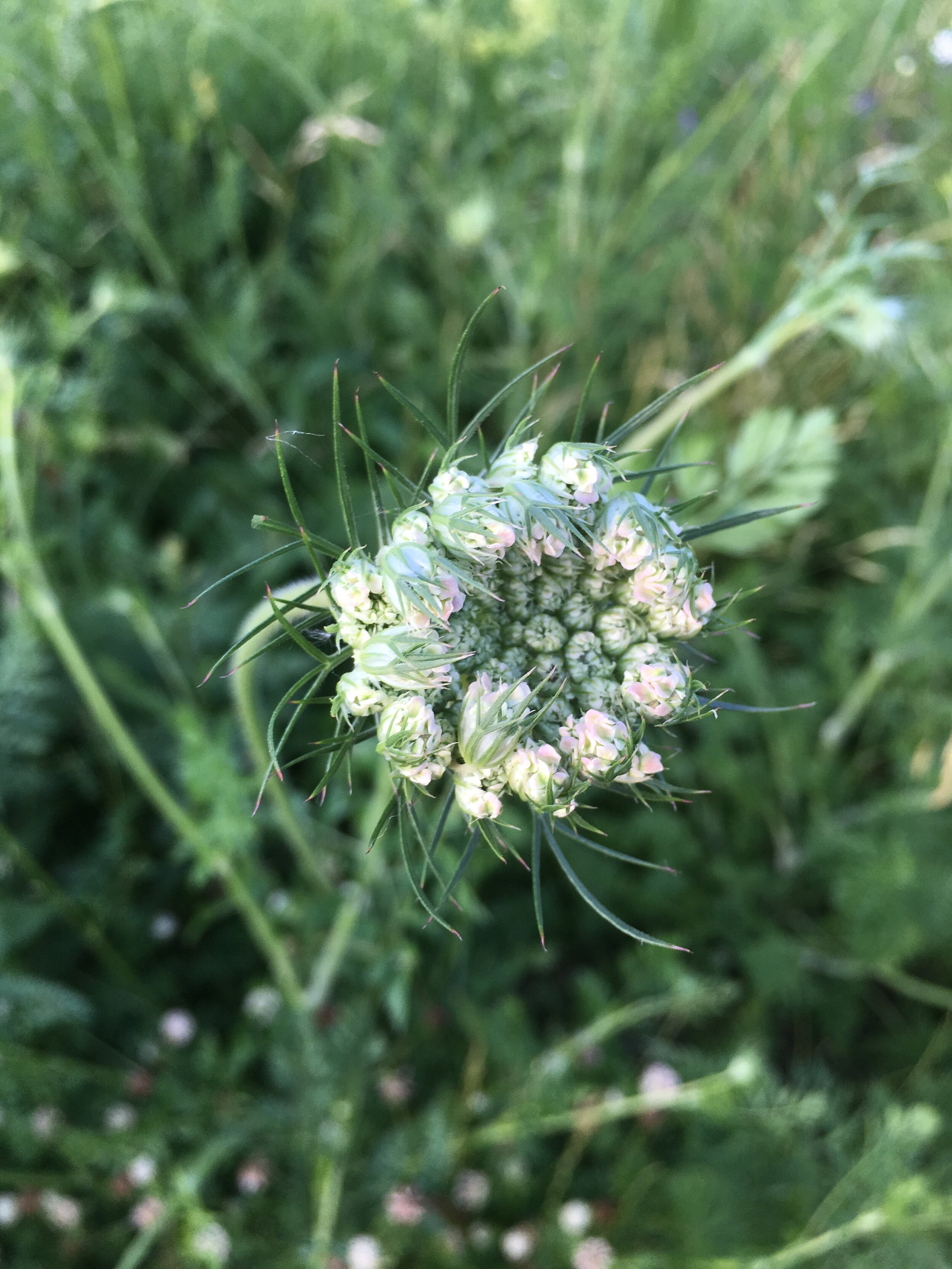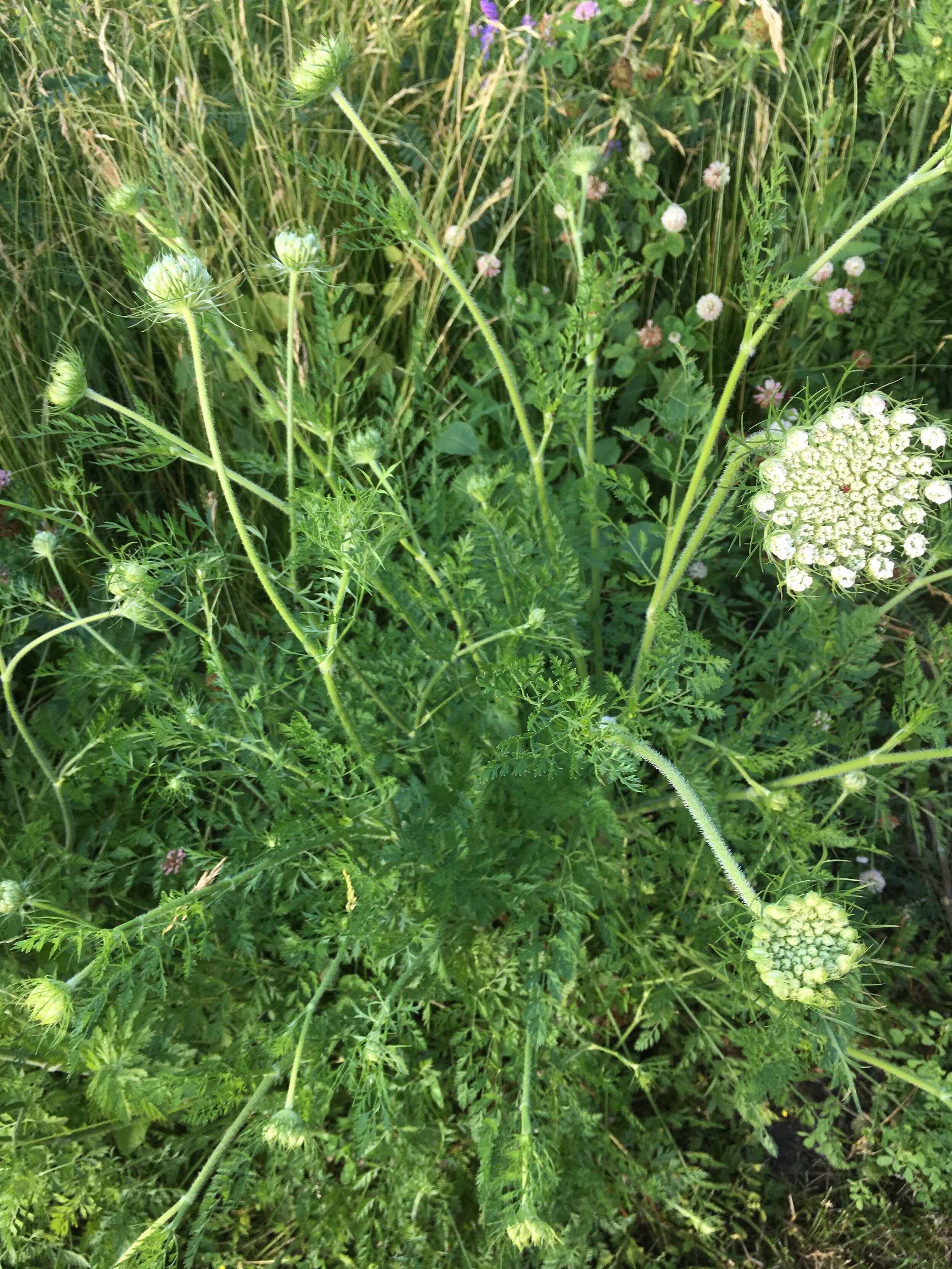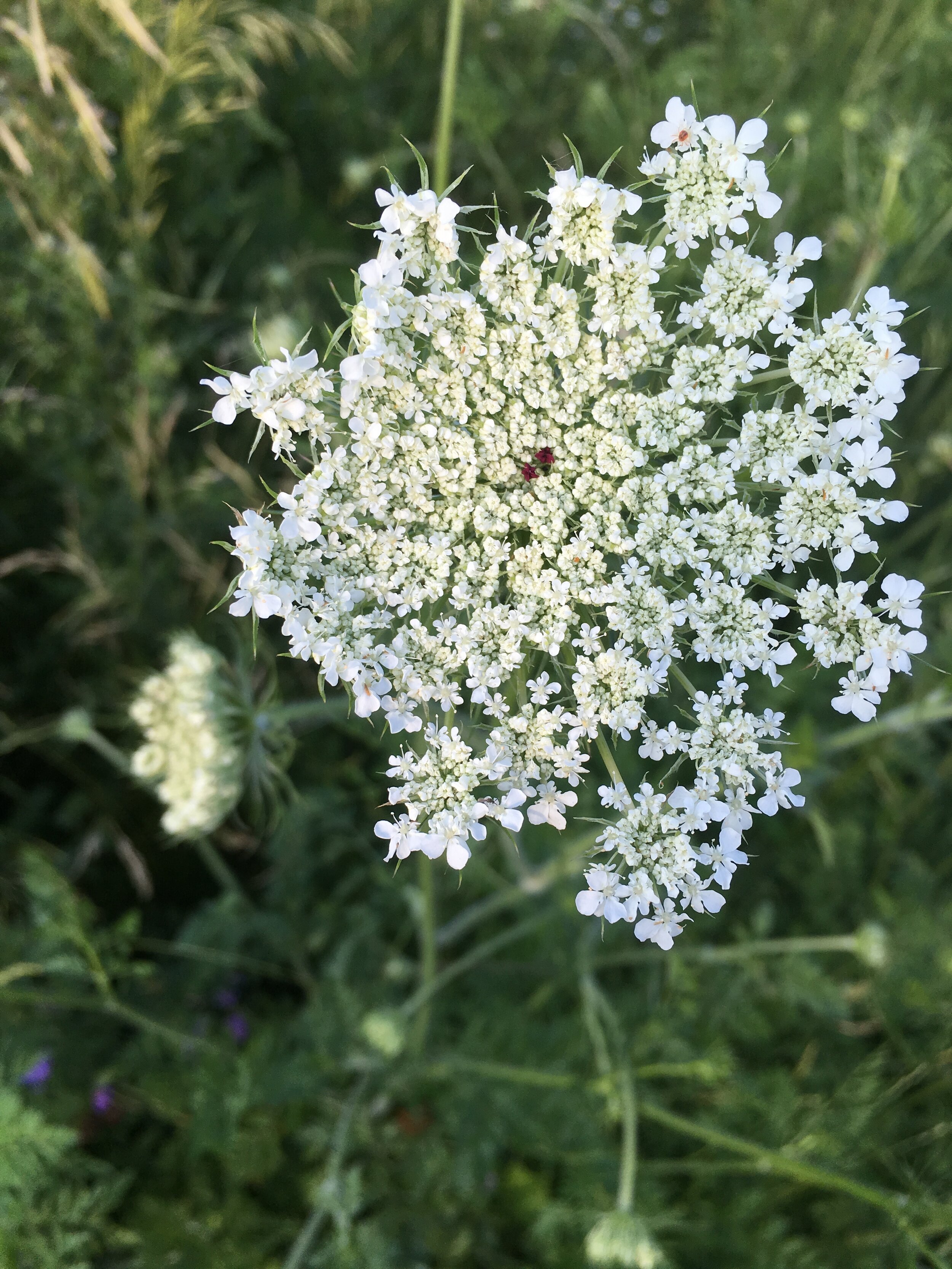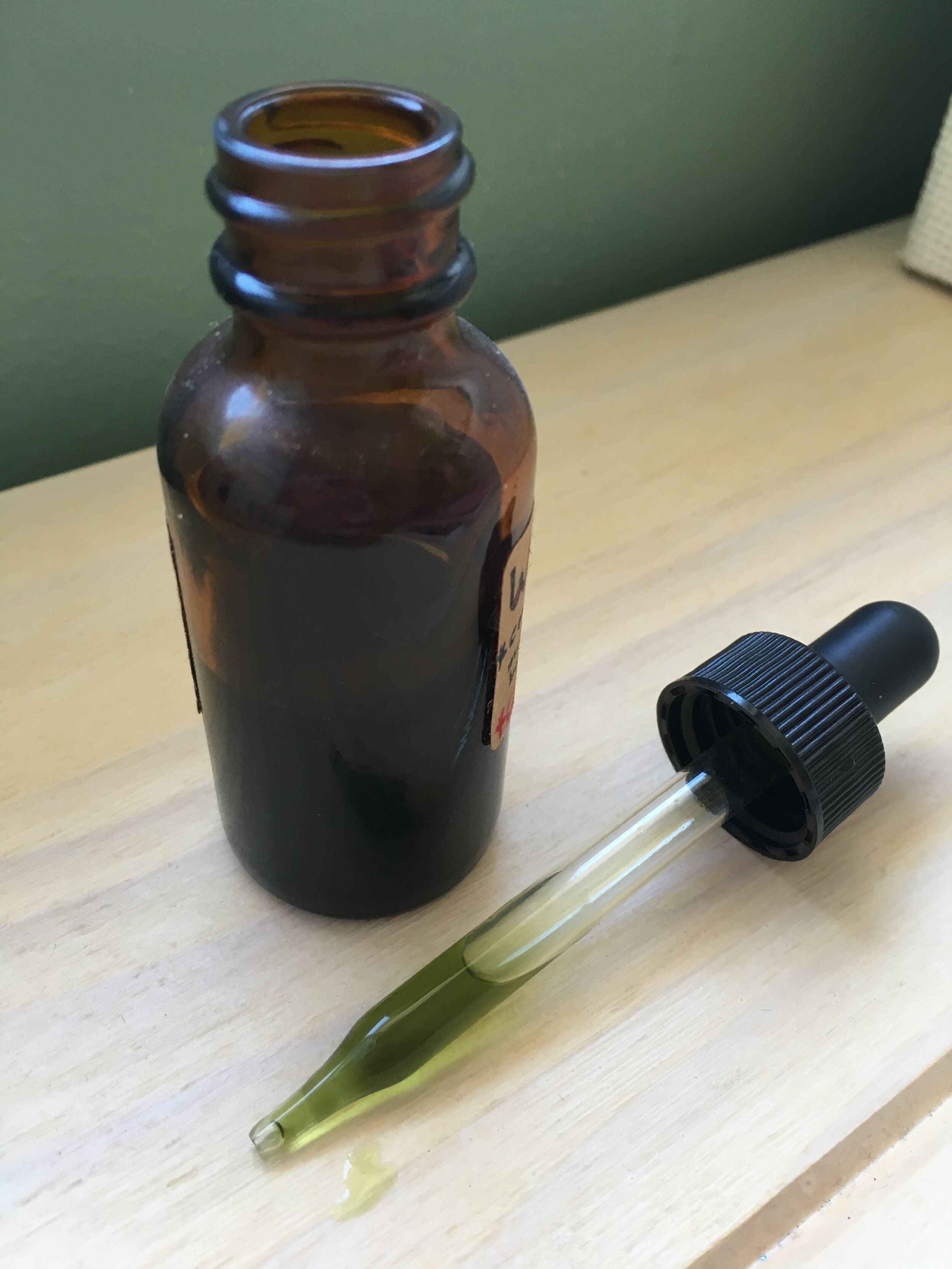For an in-depth exploration on this topic, please see my workshop on Queen Anne’s Lace for Fertility Management. Ever dedicated to accessible, and free education, here are some basics of working with QAL as a blog post. Enjoy!
Queen Anne’s Lace is a lovely, delicate wildflower, which goes by many names with many different peoples, texts, and regions, including: “Daucus Carota” (Latin Name), “Wild Carrot”, “Black Carrot”, “Bishop’s Lace”, “Cow’s Lace”, and “Bird’s Nest”. Queen Anne’s Lace is native to Europe and Central Asia and has been naturalized to North America, South Africa, and Australia. She brings up her lacy flowers in late summer, and when people work with her medicine they’re usually trying to avoid having babies.
More specifically, Queen Anne’s Lace works as an implantation inhibitor. This means it prevents a fertilized egg from implanting and developing into a pregnancy.
Queen Anne's Lace is not a contraceptive (as it does not prevent ovulation, ejaculation, fertilization, or conception ). Nor is Queen Anne’s Lace an abortive (as it does not disrupt an early pregnancy that is already well established and healthy). Rather, it disrupts normal hormonal shifts in the body that would enhance and develop healthy endometrial lining for a pregnancy to implant. It makes the uterus inhospitable to grow a pregnancy.
I like to think of it as solely being a relationship with yourself. When taking Queen Anne’s Lace, we’re not endeavoring to affect a conception, a potential life. Rather, we are affecting our own bodies. We are withdrawing our consent to be a parent (at that time) and to grow a pregnancy. It’s personal, and it affects us, alone.
Working with Queen Anne's Lace, like working with all plant medicine, is an adventure in relationship, in self-awareness, and in imperfection.
There are very few scientific studies done on Queen Anne’s Lace, even fewer with humans participating, even fewer with standardized dosing and seeking specific information about effectiveness. Historical use, anecdotes, and small community studies give us a basic picture of what to expect when working with Queen Anne’s Lace.
Small cohort studies show 90-100% effectiveness with perfect use and perfect intention, with a few big disclaimers:
These studies were done on such small selections of populations they are not generalizable to people as a whole.
Plants, and people, come in huge varieties. Just because some small studies showed effects on some people with some Queen Anne’s Lace doesn’t mean you and the plants you’re working with will respond the same. Herbal medicine has so many variables it’s difficult (and some would say unethical) to bring it into the lab.
No matter how much we scientifically study menstruation, ovulation, conception, fertilization, implantation, herbalism, and more in a lab, we can never wholly understand the mystery. Even those with predictable cycles and impeccable fertility awareness can note times of unusual fertile symptoms, and unpredictable conceptions. Even with perfect science, human error exists!
That’s all a rambly disclaimer to say: nothing works perfectly for everyone. Proceed with your own levels of personal awareness and risk when working with your own fertility.
My second and biggest disclaimer is this:
The most important aspect of working with Queen Anne’s ace is learning to identify it properly and distinguish it from its many look-alikes. Why is this so important? Because some of its look-alike are poisonous and not for consumption even in small amounts. Do not work with this plant unless you are absolutely sure of your identification!
Protocols and Dosages
There is scientific disagreement as to whether Queen Anne’s Lace has primarily estrogenic properties, or if she works more with progesterone. There is also conflict as to whether the introduction or the withdrawal of Queen Anne’s Lace is the key to her efficacy, and what the ideal timing is.
What seems to be true is this: she is not a daily contraceptive, she needs to be introduced, and then withdrawn, surrounding a specific potentially fertilizing event, on a specific schedule.
Queen Anne’s Lace, in whatever manner who choose to work with it, should be used surrounding a potentially fertilizing event:
Optimally, in three doses:
1st dose: 8-12 hours surrounding potential fertilization
2nd dose: 8ish hours after the first dose
3rd dose: 8ish hours after send dose
Then stop.
These doses should be spaced over a minimum of 24 hours and an absolute maximum of 72 hours.
These doses should be based on potential fertilization (i.e. “unprotected” sex), NOT daily, NOT only at specific times of a cycle.
Doses can be any of the following (but should stay consistent. For example: If 1st dose is tincture, all doses should be tincture):
Dried Seeds:
Choose one of the following:
About a teaspoon, chewed well and swallowed with juice/water on an empty stomach. This is the oldest historical method of consuming Queen Anne’s Lace for implantation inhibition.
About a teaspoon, ground by mortar and pestle or clean coffee grinder, and mixed into a small amount of juice or water, taken on an empty stomach
About a teaspoon, ground by mortar and pestle or clean coffee grinder, into a cup. Pour 8oz boiling water over, let steep for 15 minutes, consume on an empty stomach
Dried Flowers:
Place 2-3 dried flower heads into a teacup. Pour 8oz boiling water over, let steep for 15 minutes, consume on an empty stomach
Fresh Seeds:
Use in a tincture, as detailed below:
Fresh Flowers:
Choose one of the following:
Place 3-6 fresh flower heads into a teacup. Pour 8oz boiling water over, let steep for 15 minutes, consume on an empty stomach
Tincture:
30-60 drops in a small glass with a few tablespoons of cool water taken on an empty stomach
For a much more detailed look into working with this lovely wildflower, check out my course on Queen Annes Lace, full of a deeper exploration into holistic fertility management, plant identification, medicine making, Queen Anne’s Lace habitat, uses, studies, links, teachers, and more.
(Approx. 2-3 hrs content) In this course we share wisdom regarding this remarkable wildflower and its properties for fertility management and implantation inhibition (“nature’s morning after pill”). We’ll learn all about Queen Anne’s Lace herself, about ethical harvest and medicine making, about dosing and preparations, and about other uses for the plant! An extensive Resources section is included. Course is broken down into mini-lessons for easy navigation, and features photos, videos, and written lessons.


